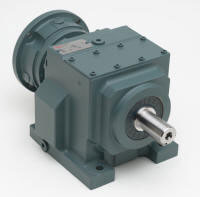 A big step toward success is choosing the proper lubricant from one of two basic types: mineral-based or synthetic (with the most common synthetic types being hydrocarbon polyalphaolefins [PAOs] and polyalkylene glycols [PAGs]). That choice should be predicated on a product’s characteristics—i.e., viscosity, viscosity index, pour point and additive package.
A big step toward success is choosing the proper lubricant from one of two basic types: mineral-based or synthetic (with the most common synthetic types being hydrocarbon polyalphaolefins [PAOs] and polyalkylene glycols [PAGs]). That choice should be predicated on a product’s characteristics—i.e., viscosity, viscosity index, pour point and additive package.
Conversely, choosing and/or using the wrong product, wrong viscosity, wrong additives, etc., are steps toward improper lubrication. Likewise, not maintaining the correct oil-fill level, operating the gearbox with dirty or contaminated oil and other poor lube practices also can be the kiss of death for your equipment.
Lubricant function in gear reducers
In all speed reducers or gear drives, friction is created between internal moving components. The primary function of the lubricant is to minimize the friction caused by the sliding and rolling action of the gears and bearings and to dissipate heat by providing a thin layer of oil between moving components. With a typical thickness of just 0.00005 of an inch, this layer of oil, known as elastohydrodynamic (EHD) film, separates the mating surfaces of components, preventing metal-to-metal contact and minimizing wear. If the EHD film is insufficient for the transmitted load, metal-to-metal contact of the mating surfaces occurs and causes pitting of gear teeth. No EHD film—or an insufficient amount of it—can also cause scuffing of the gear teeth and leads to bearing and gear failure.
For more information and detailed information on lubricaiton and gear reducers click on link.